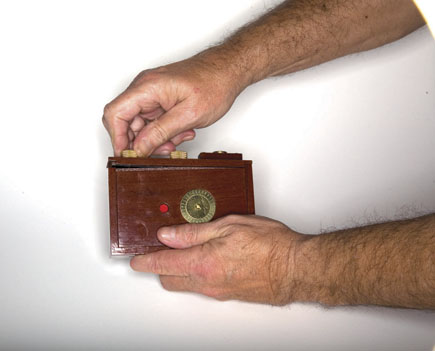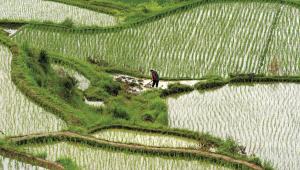Pinhole’s Progress; A Legendary Legacy Lives On
Does it really matter how you get the picture on a piece of paper? Why not take a holiday from all the gadgetry and take a journey back in time with me and thousands of others and have some fun without worrying about things like Live View, megapixels, and more. In fact, don’t even worry about a lens! Try pinhole photography.
Pinhole photography, long popular in Japan and China, has caught on with a vengeance here in the US. Witness the groups on Flickr (you can see some of my photos on Flickr at: www.flickr.com/photos/photodoc2) or the Internet dedicated to pinholes (almost 2 million possible locations) or the manufacturers of pinhole cameras worldwide. Even Holgas have succumbed to pinhole mania.
 |
|
|
What Makes It A Pinhole Camera?
A pinhole camera is simply any container that can be made light-tight and will accept film. Film sizes vary from 20x24 on converted suitcases down to the old 110 film size. (Actually, a pinhole photograph was made using an aircraft hangar as a camera in 2006—www.alternativephotography.com/articles/art100.html—a bit unwieldy for our purposes.) Pinhole cameras use a pinhole for a lens. These can be anything from a small pin-sized hole punched in aluminum foil or brass to precise laser-drilled pinholes available from a number of manufacturers.
 |
|
|
The cameras range from homemade to custom-made collectibles. Being seriously do-it-yourself challenged, I elect to buy mine. (Caveat: Buy from a reputable camera maker as some of these are absolute monsters that look good on the outside, but are horrible as takers.)
My favorite cameras come from Zernike Au of Zero Image (www.zeroimage.com) in Hong Kong. He makes a range of precision and innovative pinhole cameras from 35mm to 4x5. All of these are teak, with brass fittings, and are a joy to use. I have several of his cameras, including a Zero 4x5 multi focal length and a Zero 2000 6x6 Deluxe (my favorite).
 |
|
 |
|
 |
|
|
Then there are the pinhole cameras that can only be described as art. My favorites are the Chamaeleons from Juergen Kollman (see his Photostream on Flickr at: www.flickr.com/photos/lochkamera). These can only be described as sensual, beautiful pieces of art that are photographically well engineered if you can afford the price that rivals some low-end D-SLRs!
I have bought a lot of these cameras (and been burned a lot, as well) by both the good and the bad designers, so let me caution the first-time buyer, be really careful when you buy. I have a few expensive horror stories to relate. Buy from a reputable dealer like Zero Image or Leonardo. Some so-called custom craftsmen are not photographers! (Some can’t even use the post office.) You can find a lot of good buys on eBay, too.
 |
|
 |
|
 |
|
|
Why Pinhole?
I love pinhole cameras because they actually slow you down. Inherently, they require that you actually perform some thinking about and examining of your subject. You won’t shoot any stock car races with these things because with ISO 100 film your exposures on the brightest days will range from 1-2 seconds. But, therein lies part of the appeal of pinholes. If you choose a subject with some movement in the scene as well as some static subject, the results can be amazingly artistic. Moving water is a favorite subject of most pinholers.
Keep in mind that most pinhole cameras have pinholes that equal f/135 or more. My Zero 4x5 with two extensions has an f/stop of 235! Exposures start getting pretty long at this end of the scale. If you take into account reciprocity failure, some exposures can run 90 minutes!
 |
|
|
- Log in or register to post comments

















































